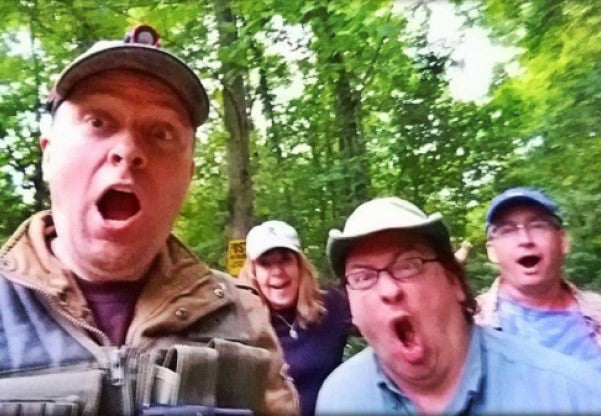
Much of the focus in Bigfoot research is on the creature itself. I believe the key to understanding the mystery behind Bigfoot is understanding the interactions that take place with humans. And, to do that, you must first understand humans. A Bigfoot sighting, or interaction, does not take place without a Bigfoot, and a human. This is where my journey into all things Sasquatch related has taken me.

For many decades now, or longer, people have been reporting visual sightings of a large hairy ape-like creature roaming the woods of North America. Many people have decided to investigate these sightings and have began collecting physical evidence. Footprints have been cast, hand and fingerprints have been recovered, hair and other biological material has been analyzed, and where has this gotten us? …nowhere. We are no further along in understanding the origin to these sightings.
One thing is clear, people are seeing something and evidence suggestions that something is most likely of unknown origin. But here is where the problems begin. When humans do not understand something, they tend to try and put it in context of something they can understand. Some of these include an undiscovered ape, an alien, a primitive human and even a ghost. The fact is, we do not know what it is, and it might just possibly be …something new.

So, let us look at the human element. A lot of these witnesses, and I mean A LOT, are from rural areas. Most were going about their normal lives when suddenly they saw something they cannot explain. Each witness has a unique experience and interprets that experience in a very individual way based on previous experiences, their own knowledge base, and biases they have. Sometimes these experiences are very short, only partial and contain limited information to interpret. This combined with excitement, stress and fear makes the witness accounts unreliable and hard to extrapolate any pertinent information. However, these accounts are the single most important part about the sighting and hold the key to unlocking the mystery.
Physical evidence is only relevant in the case where it corresponds to a human witness to the event that created the evidence. Otherwise, we have something unusual and no reasonable explanation for it. The story is what links the evidence to the event. As an investigator myself, I often spend more time getting to know the witness than scouring the scene for physical evidence. For me, the key is not always about truthfulness, but that is very, very important as well, but in understanding the story and how it was interpreted. I have had several instances where I believe parts of the witness’s story were embellished or even fabricated but I still felt the individual did in fact have an interaction with something unknown.
In many cases, I will spend a whole day or more with the witness and sometimes I have my own experiences while investigating there’s. I like to understand what they think they saw and why they chose to classify that in the way that they did. I arrive at these locations with an open mind, I try and suppress my biases, and I reserve judgement as best that I can until I feel confident that I understand the people and the events they witnessed. Jumping to conclusions, pre-judging or dismissing parts of the event they witnessed only interfere with my journey to understand and interact with these mysterious beings of the forest.
 For me, it really has become about interactions and contact with the Sasquatch. I do not find it necessary to prove they exist; I already believe they do. I am, however, interested in what they are, what they want, what they do and why they choose to interact with humans in the ways they do. Interpreting the interactions others have with the Bigfoot helps me progress in my understanding of who these beings are and how I might have my own interactions with them. No one should be making snap judgements about the truthfulness of a witness. Doing so is not only unfair but is preventing the discovery of useful information that may be relevant to the investigation at hand. The fact is, good people, bad people, truthful people, non-truthful people, observant people and non-observant people have all been witness to something unbelievable. Labeling people as hoaxers and liars is serious business and should be avoided except in extreme cases. We are all human and even though we think we know the truth; we really do not.
For me, it really has become about interactions and contact with the Sasquatch. I do not find it necessary to prove they exist; I already believe they do. I am, however, interested in what they are, what they want, what they do and why they choose to interact with humans in the ways they do. Interpreting the interactions others have with the Bigfoot helps me progress in my understanding of who these beings are and how I might have my own interactions with them. No one should be making snap judgements about the truthfulness of a witness. Doing so is not only unfair but is preventing the discovery of useful information that may be relevant to the investigation at hand. The fact is, good people, bad people, truthful people, non-truthful people, observant people and non-observant people have all been witness to something unbelievable. Labeling people as hoaxers and liars is serious business and should be avoided except in extreme cases. We are all human and even though we think we know the truth; we really do not.

So, what stage of your research have you reached. Have you developed a working hypothesis and do you have any data which would tend to support your approach?